2023 年内蒙古包头中考英语真题及答案
第一部分 听力(共两节,20 分)
听录音,根据各题要求选择最佳答案,并将答题卡上对应题目的答案标号涂黑。每项内
容读两遍。
第一节(共 5 小题;每小题 1 分,共 5 分)
听下面 5 段对话,根据你听到的内容选出相应的图片。
1. ______
2. ______
3. ______
4. ______
5. ______
第二节(共 15 小题;每小题 1 分,共 15 分)
听下面 5 段对话或独白。每段对话或独白后有几个小题,从题中所给的 A、B、C 三个选
项中选出最佳选项。听每段对话或独白前,你将有时间阅读各个小题,每小题 5 秒钟;
听完后,各小题将给出 5 秒钟的作答时间。
听第 6 段材料,回答第 6 至 8 题。
6. Which room will David clean first?
A. The bathroom.
B. The
bedroom.
C. The living room.
7. Who will clean the kitchen?
A. David.
Grandma.
B.
C. Nobody.
8. What can be found on the table?
A. Some strawberries.
B. Some
bananas.
C. Some apples.
听第 7 段材料,回答第 9 至 11 题。
9. Where does the woman want to go?
A. The art museum.
B. The science
museum.
C. The history museum.
10. How long will it take the woman to walk there?
A. About 30 minutes.
B. About 25 minutes.
C.
About 15 minutes.
�
11. How will the woman go there?
A. By bus.
train.
B. By
C. By subway.
听第 8 段材料,回答第 12 至 14 题。
12. How many coins has Jack collected?
A. 200.
210.
B.
C. 220.
13. Why does Jack like co llecting coins?
A. The size of the coins.
B. The shape of the coins.
C.
The history behind the coins.
14. Who has an influence on Jack’s hobby?
A. His friend.
aunt.
B. His
C. His mother.
听第 9 段材料,回答第 15 至 17 题。
15. What is wrong with the woman?
A. She is late for work.
B. She can’t find her son.
C.
She is angry with her son.
16. Why did the woman’s son fail the exam?
A. He didn’t go to school any more.
B. He spent too much time on the computer.
C. He didn’t have enough time to fi nish the exam.
17. Who is the man?
A. Leo’s father.
B. Leo’s
teacher.
C. Leo’s uncle.
听第 10 段材料,回答第 18 至 20 题。
18. Where did the students meet for the school trip?
A. In front of the school hall.
B. Outside the school library.
C. At the gate of the museum.
19. What did the students do at the end of the trip?
A. They watched a bike-riding performance.
B. They bought many gifts from the gift shop.
�
C. They took many photos outside the museum.
20. How did the students feel about the school trip?
A. Happy.
Crazy.
B.
C. Tired.
第二部分 语言知识运用(共 15 小题;每小题 1 分,共 15 分)
阅读短文,从短文后各题所给的三个选项(A、B 和 C)中,选出可以填入空白处的最佳
选项。
A walk in the park
Isha fell back on her sofa strongly and found herself getting terribly upset.
Her living room was too hot and
1
, and she couldn’t bear to stay there
one more second. She
2
up suddenly and decided that she had to go outside
for some fresh air. Maybe her neighbour Georgia would want to
3
with
her.
“Mum,” she called, “can I go outside and play with Georgia?”
“Absolutely not!” her mum replied. “Even though it looks
4
now,
it’s going to rain later and I don’t want you to get wet.”
Taking no care of her mum’s warning, Isha stuck to her
5
. Her mum
had gone upstairs to do some work in her office, so Isha had the
6
to
sneak (偷偷地走;溜) out of the house and call out Georgia. Luckily, she
7
.
The girls met in the street and chatted happily
8
they walked.
Before long, Isha wondered if they had
9
—they were in a small unknown
park, and none of the buildings nearby looked familiar. Things got even
10
when she found some heavy clouds rolled in (滚滚而来). The first raindrops fell,
and the girls decided to go
11
.
Isha’s
12
was beating fast as she tried to sneak back into the house
without being
13
by her mum. However, to Isha’s surprise, her mum was
waiting
14
in the living room for her.
“Come on,” said her mum in peace, “let’s get you into some dry clothes
before you catch a
15
.”
1.A.relaxing
B.boring
2.A.stood
B.gave
C.bright
C.stayed
�
3.A.play
4.A.terrible
B.dance
B.nice
C.read
C.dark
5.A.agreement
B.promise
C.decision
6.A.message
B.money
7.A.failed
B.succeeded
8.A.when
B.if
9.A.come out
B.got lost
10.A.better
B.funnier
11.A.on
12.A.drum
B.back
B.wing
13.A.noticed
B.doubted
14.A.excitedly
B.angrily
C.chance
C.refused
C.because
C.set off
C.worse
C.around
C.heart
C.required
C.patiently
15.A.cold
B.ball
C.bus
第三部分 阅读理解(共 15 小题;每小题 2 分,共 30 分)
阅读短文,从每题所给的四个选项(A、B、C 和 D)中,选出最佳选项,并在答题卡上
将该项涂黑。
A
Kids in British schools can do many sports. In most British schools, children
do two hours or more of sports every week, and they can choose from between 15
and 20 different sports. Here are several students talking about their school
sports.
“I’m Craig Hopkins, and I’m in Year 11 at Park School. I love playing
football and cricket. My favorite sport is rowing. There is a big lake near my
school, and we go there once a week to row. I’m in the school team and two or
three times a year we row against teams from schools in other parts of the
country.”
�
“Hi, I’m Julia in Year 11 at River School. Though I’m not in any team,
I can swim, play tennis and baseball at school. I love orienteering (越野识
途比赛) most! In orienteering, you have to run and run—but you have to find
where to go, too! You have a map and a compass, and you have to get to a place
as fast as possible. It’s great fun—even when it’s raining!”
“I’m Brendan. I have played handball with Newcastle Tigers for nearly two
years. It’s a very enjoyable team sport. In summer we played on the beach. This
year I won the best player of the year award for my outstanding training attitude
and hard work. I also joined a handball club at school and some other school
sports too.”
16.What’s the favorite sport of Craig?
A.Rowing.
B.Football.
C.Orienteering.
D.Handball.
17.Why could Brendan win the award?
A.He won many competitions.
B.He had a gift for handball playing.
C.He joined a professional handball club.
D.He had a good training attitude
and worked hard.
18.What do the listed students have in common?
A.They come from the same school.
B.They show no interest in team
sports.
C.They are members of the school teams.
D.They can choose many kinds of
school sports.
B
�
I’m about to begin my fifth season of tree planting. Each year, around this
time, I have mixed feelings about the job. After enjoying the warmth of my home
for the winter months, I begin to miss the challenges of life in the bush.
In the early hours of the morning, we join our team—normally 6 to 12 men
and women. Some of us will be covered in suncream and dirt. Our trucks travel
deep into the woodlands. When we step out of the trucks, we’re faced with a
hillside that has just been logged (砍伐) and is covered with piles of logs (原
木) and branches.
We quickly fill our bags with hundreds of tiny trees. Skilled tree-planters
treat this more like a sport than a job, and competition fills the air. Once
our bags are full, we jump from log to log. We fall many times, always pushing
ourselves to go faster.
Daily pains get to us all. We feel uncomfortable in the heat, deal with cold
at night and suffer from anger. But beautiful moments are always waiting. I
remember, lying in my tent one night, listening to a pack of wolves howling in
the distance. The season afterward I came across a bobcat that was sitting and
calmly staring at us.
I’ve worked with a 62-year-old tree-planting legend (传奇人物) called Grant
—believed to have planted seven million trees in 40 years. Once he got caught
in a rockslide and broke his back. It took him years to recover, but he came
back stronger than ever. His passion (热爱) for the job reminds me of what I
love about it.
Tree planting is a laboratory of self-growth. You master your mind and face
the worst and the best in your nature. A new version of yourself awaits at the
end of the experience. And after sleeping in a tent all summer, you learn never
to take your bed for granted. So value what you have had and face the challenges
in your life with great passion.
19.Why does the author plant trees?
A.To be well-known.
B.To make a living.
C.To challenge himself.
D.To learn planting skills.
20.Which of the following could best describe Grant?
A.Honest.
B.Quiet.
C.Humorous.
�
D.Strong-willed.
21.What does the underlined part in the last paragraph probably mean?
A.You need to be yourself.
B.You can be more careful.
C.You should be thankful for what you own. D.You should take your bed with
you next time.
22.What is the best title for the text?
A.Crying in the Bush
B.Planting with Passion
C.A Lesson from Grant
D.A Mistake in the Wild
C
An electronic book—known as an e-book—is the text and art of a book
published in digital form. Some say the convenience of a digital book beats the
benefits of reading a real book, that is, a book printed on paper. Is that true?
A famous writer once wrote, “You can find magic wherever you look. Sit back
and relax. All you need is a book!” Back then, of course, he meant a book printed
on paper, but today that’s not the only way to read one. People can choose to
read a real book, or they can read an e-book on an e-reader device (设备) or
a computer. Many people like reading e-books because they are convenient and
easy to carry.
However, a real book can never be replaced. There is nothing better than
the feel of a real book, from the weight of it in your hand to the satisfaction
of turning each page. It’s part of the experience of reading—just like going
to a library or bookstore and turning the pages of a book freely. Scrolling (滚
屏) through a device isn’t the same. And not every kind of book translates well
to digital. Plus, e-books can require expensive devices that need to be charged
(充电), as well as Internet access to download books. That’s not always possible
or convenient. A printed book, however, doesn’t have to be connected to be
enjoyed. What’s more, when reading a real book, you can feel a pleasure of the
mind, which will help you get information and remember it more effectively. And
it contributes towards developing the communication skills and unlock our
imagination.
In 2022, sales of e-books in the US totaled about $ 1 billion, while real
�
books sales hit $ 9.1 billion. In a survey, 30% of Americans who read books chose
e-books, while most still prefer real books. Besides, research shows that
understanding improves when people read books in print, rather than in digital
form.
23.Why do some people like reading e-books?
A.E-books provide more understanding.
B.E-books are convenient and easy to carry.
C.E-books increase printing costs and paper use.
D.E-books benefit people with reading difficulties.
24.What can we know from paragraph 3?
A.People are too busy to read a real book.
B.Children are into reading e-books nowadays.
C.It is enjoyable to read real books in a library.
D.All the real books can be translated well to digital.
25.What’s the purpose of listing numbers in the last paragraph?
A.To stress the importance of reading books.
B.To show the popularity of reading real books.
C.To give examples of American best-selling books.
D.To compare the differences of the two reading habits.
26.What’s the main idea of the text?
A.Reading habits are changing
B.Reading books is a good habit
C.Real books benefit us in many ways
D.Nothing compares to reading an e-book
D
There are millions of teenagers using social media every day. Although some
people think social media is a positive thing, many are worried about the
negative influences it can have on young people.
Many teenagers agree that social media helps them stay connected to their
friends and make new friends from around the world. More and more teenagers are
willing to share their life and thoughts online. Thanks to advances in technology,
�


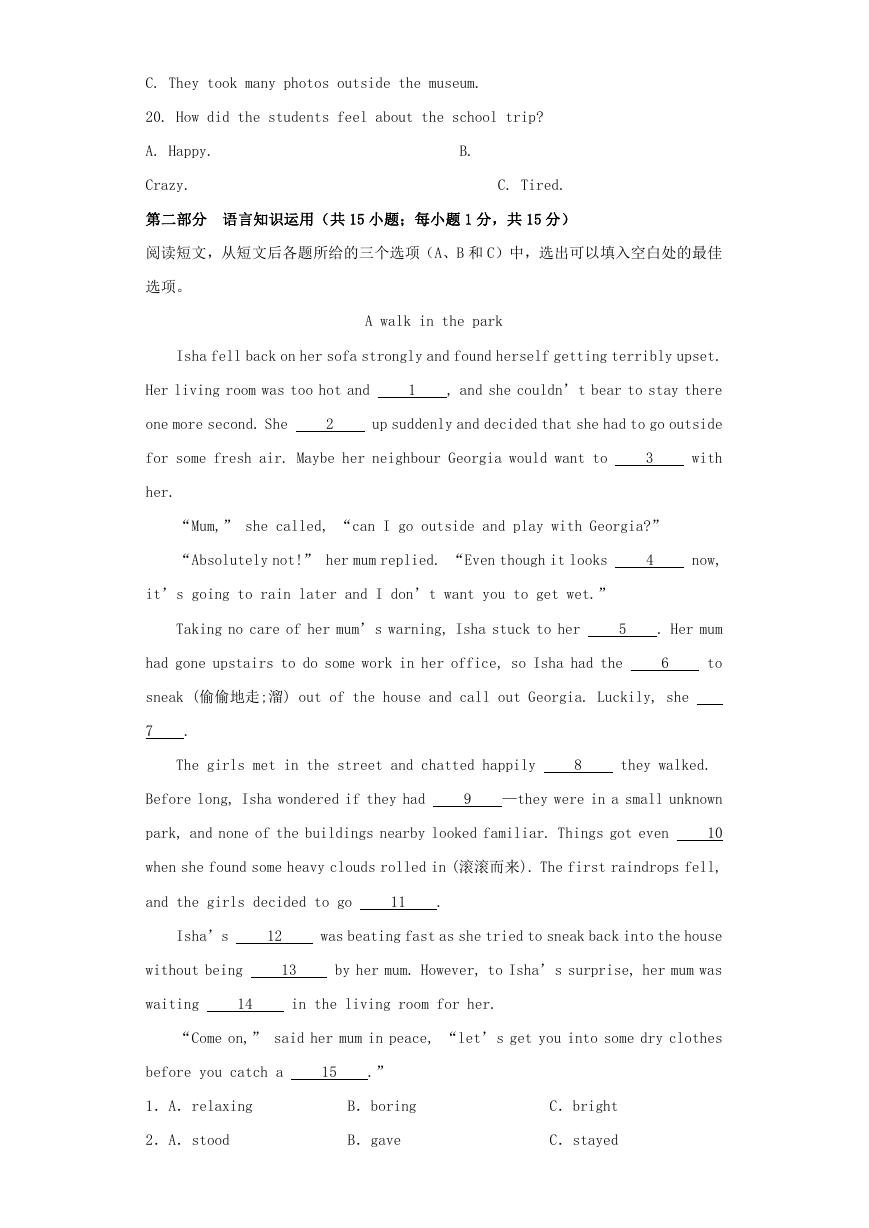
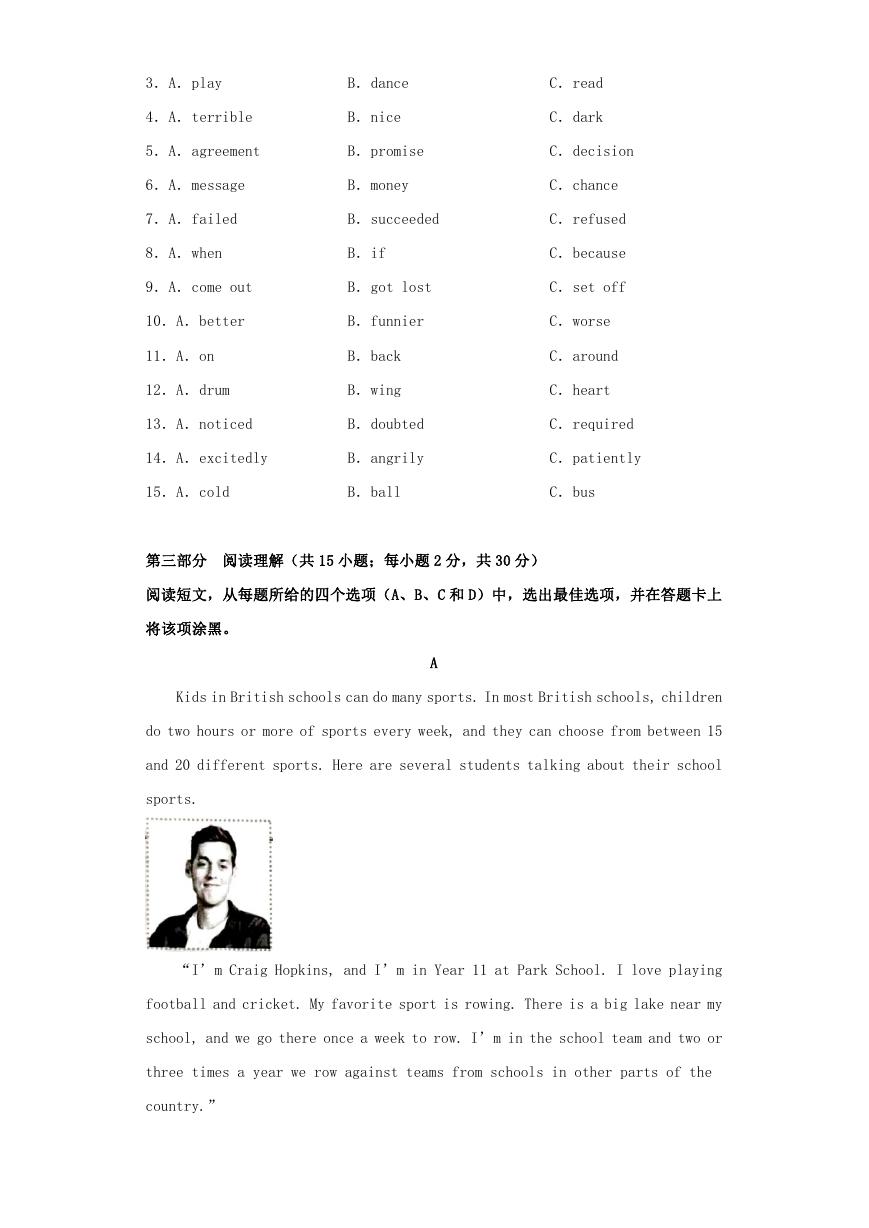
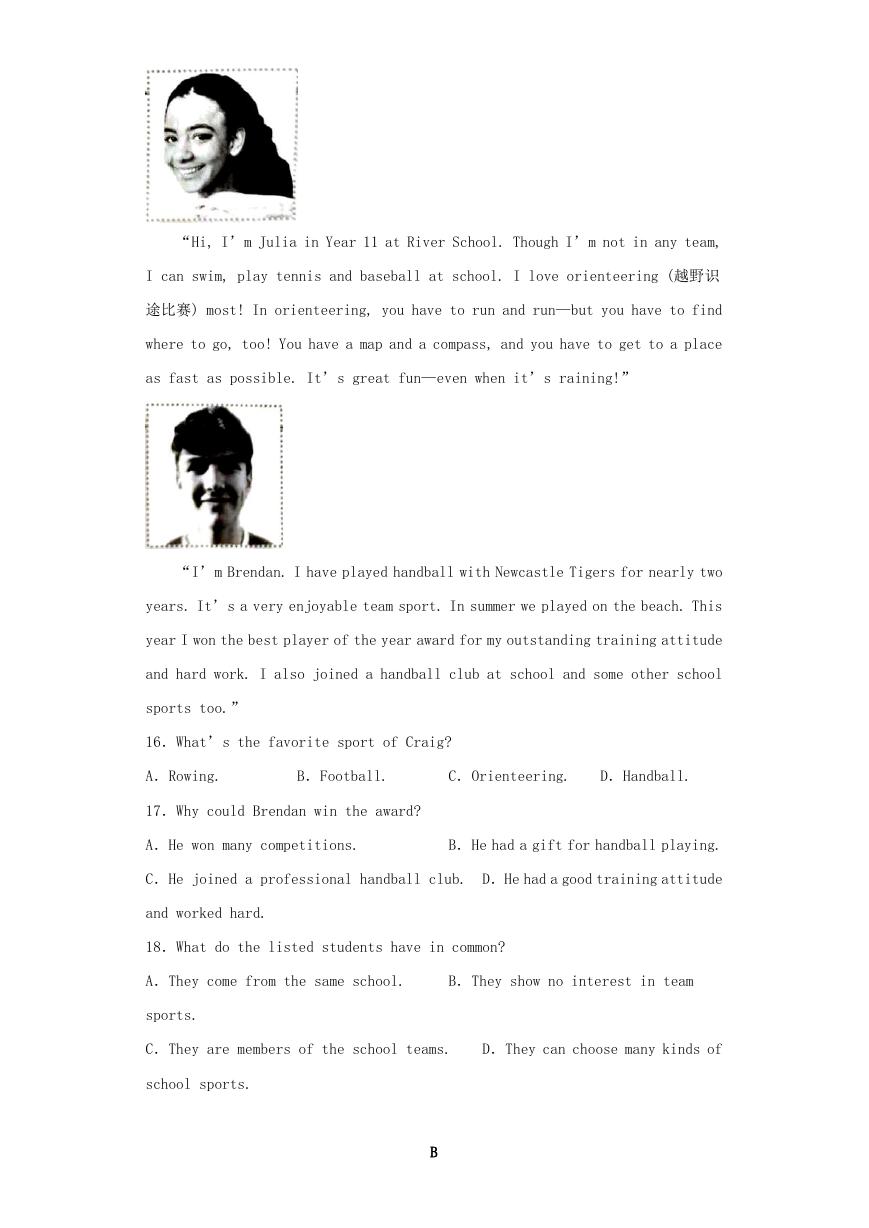
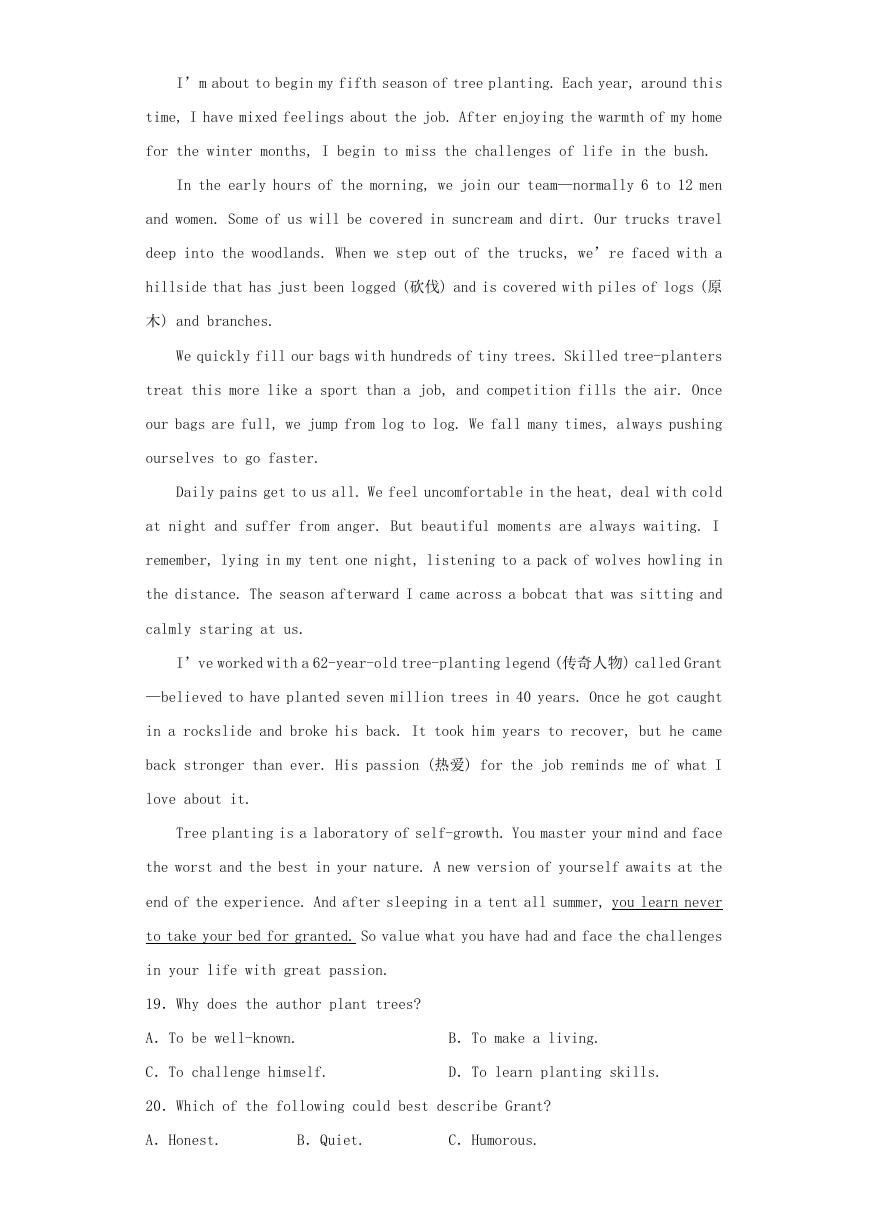
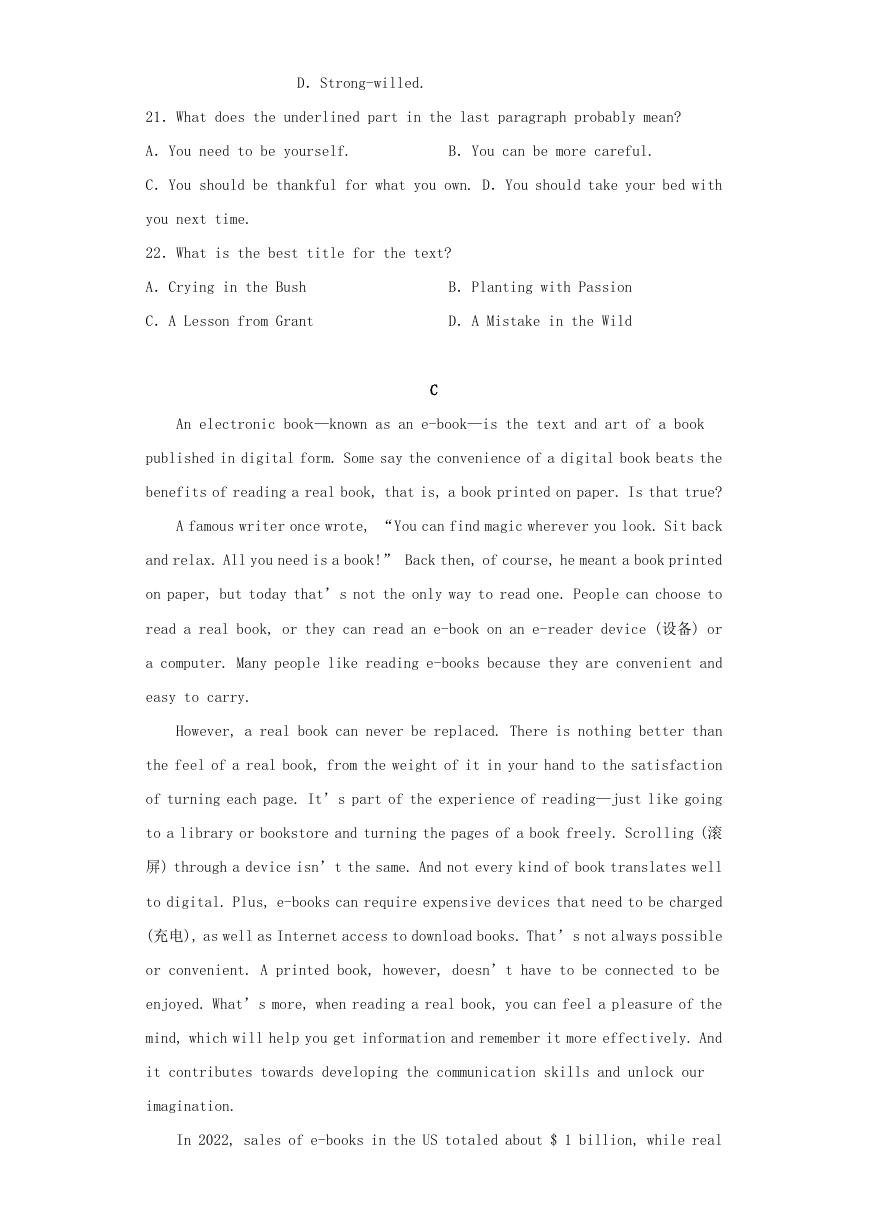









 2023年江西萍乡中考道德与法治真题及答案.doc
2023年江西萍乡中考道德与法治真题及答案.doc 2012年重庆南川中考生物真题及答案.doc
2012年重庆南川中考生物真题及答案.doc 2013年江西师范大学地理学综合及文艺理论基础考研真题.doc
2013年江西师范大学地理学综合及文艺理论基础考研真题.doc 2020年四川甘孜小升初语文真题及答案I卷.doc
2020年四川甘孜小升初语文真题及答案I卷.doc 2020年注册岩土工程师专业基础考试真题及答案.doc
2020年注册岩土工程师专业基础考试真题及答案.doc 2023-2024学年福建省厦门市九年级上学期数学月考试题及答案.doc
2023-2024学年福建省厦门市九年级上学期数学月考试题及答案.doc 2021-2022学年辽宁省沈阳市大东区九年级上学期语文期末试题及答案.doc
2021-2022学年辽宁省沈阳市大东区九年级上学期语文期末试题及答案.doc 2022-2023学年北京东城区初三第一学期物理期末试卷及答案.doc
2022-2023学年北京东城区初三第一学期物理期末试卷及答案.doc 2018上半年江西教师资格初中地理学科知识与教学能力真题及答案.doc
2018上半年江西教师资格初中地理学科知识与教学能力真题及答案.doc 2012年河北国家公务员申论考试真题及答案-省级.doc
2012年河北国家公务员申论考试真题及答案-省级.doc 2020-2021学年江苏省扬州市江都区邵樊片九年级上学期数学第一次质量检测试题及答案.doc
2020-2021学年江苏省扬州市江都区邵樊片九年级上学期数学第一次质量检测试题及答案.doc 2022下半年黑龙江教师资格证中学综合素质真题及答案.doc
2022下半年黑龙江教师资格证中学综合素质真题及答案.doc